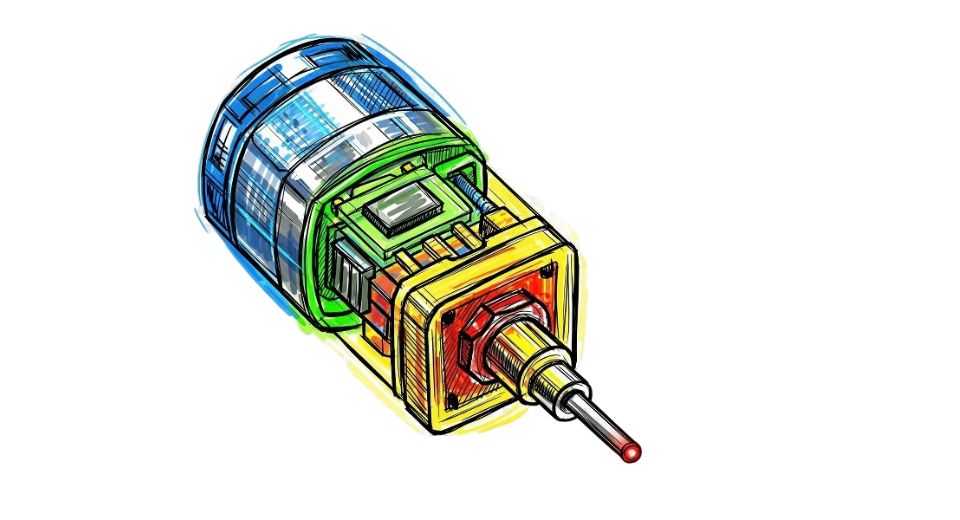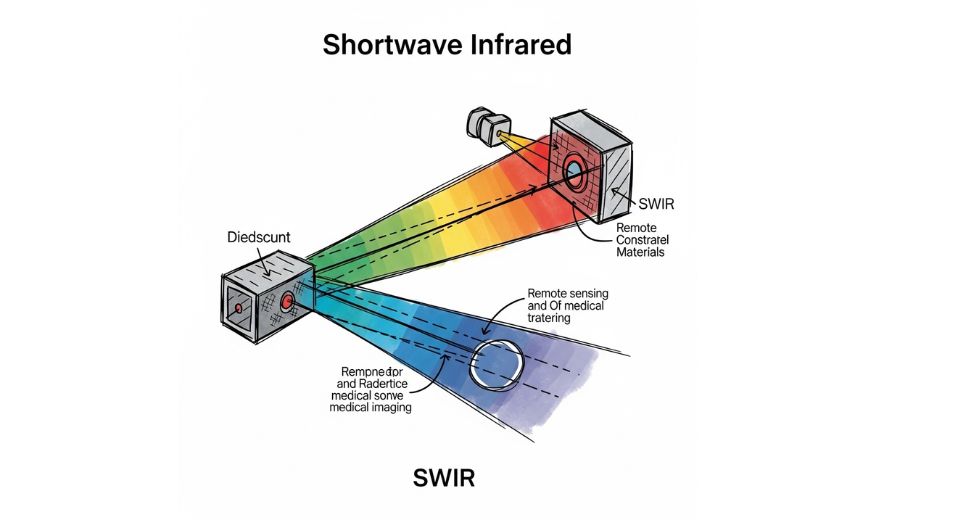MARKET OVERVIEW
The Global Single Pair Ethernet market finds itself straddling the thinly networking line linking industrial automation and data communication, thereby accommodating a much more distinctive requirement for simplified, space-efficient, and cost-saving connectivity in difficult environments. Accordingly, Single Pair Ethernet will signal a departure from present standards on how networks will be engineered in areas whereby outdated cabling or traditional Ethernet standards might not give the flexibility or the extremely compact physical dimensions demanded by the latest smart systems. Ultimately, with the industry embarking on the journey to intelligent systems and distributed sensor networks, the Global Single Pair Ethernet market, by that point, would become accepted increasingly as an underlaying layer for connectivity.
Single Pair Ethernet, by design, places data and power transmission down a single pair of copper wires, in stark contrast to common Ethernet cabling that uses four pairs. This development allows manufacturers and infrastructure developers to design smaller, lighter, energy-efficient devices without compromises to communication speed or reliability. Industries that demand less weight, more design flexibility, and communication capability over greater distances that Global Single Pair Ethernet will target sphere are automotive, manufacturing, building automation, and energy.
Change in connected systems within industrial environment streams will demand a simple approach to cabling, which SPE offers by supporting Ethernet-based communication down to the edge devices. Global Single Pair Ethernet will be addressing an ever-increasing need for scalable communication protocols that do not have complex gateway or multi-layer translation requirements. This direct communication from sensors and actuators to control systems will flatten and ease management of industrial networks, made possible by SPE. Simplifying networks will translate into opportunities for systems integrators and network engineers, especially in facilities where space and costs are at a premium.
Standardization will, therefore, be very influential in shaping the Great Global Single Pair Ethernet market. Unified protocols and connectors will ensure compatibility across applications and hardware types. This will lessen industries' dependence on proprietary solutions, allowing them to adopt SPE in the assurance of long-term interoperability and support. This plays a crucial role in mission-critical systems-for example, transportation and energy management, where consistent performance and future-proof design become the ultimate priority.
As various device manufacturers go towards miniaturization, the Global Single Pair Ethernet market will facilitate integration of high-speed data channels into smaller devices that would not work with traditional Ethernet infrastructure. As the device manufacturing sector embraces miniaturization, it will support the integration of high-speed data channels into smaller devices that would not have been compatible with traditional Ethernet architecture. This scenario will result in more intelligent devices walking into operations to enhance real-time data acquisition and allow for predictive analytics at a scale that was never possible before. Likewise, SPE will also find automotive relevance, where vehicle weight reduction while sustaining advanced driver-assistance systems is crucial.
The Global Single Pair Ethernet market will continue to develop around needs for simplified connectivity that sustains both current demands and future applications. By innovating cable designs, connector systems, and transmission protocols, it will define the next phase in industrial and embedded networking, facilitating the transition towards smarter, more efficient, and more connected infrastructure.
Global Single Pair Ethernet market is estimated to reach $781.76 Million by 2032; growing at a CAGR of 10.5% from 2025 to 2032.

GROWTH FACTORS
The Global Single Pair Ethernet market is likely to be propelled forward, as industries keep moving toward smarter and more interconnected systems. With further advances in industrial automation, the need for reliable, fast, and efficient communication between machines and sensors is paramount. Single Pair Ethernet, also known as SPE, is enabling this revolution by simplifying cabling and yet providing the optimal scope of performance needed for complicated environments. As more manufacturing plants migrate toward digital control systems, the contribution of SPE will become more profound.
Another great sector where technology will display tremendous growth is the automotive industry. More and more, cars are becoming smarter and more connected and responsive with the introduction of IoT technologies. Everything from a sensor that monitors performance to a system that enhances safety and comfort depends on seamless and rapid data communication. Single Pair Ethernet can provide this with the possibility of power and data to be transmitted through one line, bringing down weight and costs in vehicle wiring. This is very beneficial for an electric vehicle, where lighter constructions are preferred.
Even though the prospects look promising, there are some challenges that are worth addressing. A chief concern is compatibility, meaning that SPE may or may not work well with existing Ethernet systems, which might delay its acceptance in environments already burdened by older infrastructure. Moving on, there is the distance issue, which Single Pair Ethernet does not presently match with the long-range capabilities of traditional Ethernet cabling. These technical limitations might hinder the entry of this technology into broader use, especially in larger spaces or older buildings.
Regardless of these challenges, stronger optimism looms ahead. One of the curious prospects will be in smart buildings. While homes, offices, and public facilities become more automated, the number of connected devices keeps on multiplying. Single Pair Ethernet could be that choice for these areas which require to interconnect sensors, lighting systems, and climate controls on a streamlined network. This type of installation will allow for smarter buildings to be even more energy-efficient and easy to use.
All in all, the Global Single Pair Ethernet market will see steady growth, spurred on by the trends of automation and digital transformation. Despite its few hurdles, its benefits to the new technologies make it a strong candidate for widespread adoption in the near-incoming future.
MARKET SEGMENTATION
By Type
Global Single Pair Ethernet market is only poised to grow bigger since industries these days become dependent on communication systems at work. As technology advances, an ever-increasing demand for more seamless data transfer between devices increases with Single Pair Ethernet, which is likely to meet the demand features classified into different segments and further divided into infrastructure and device component, solution, and service types. Each of these segments plays a key role in shaping the future of the market and is vital to it.
The infrastructure and device component segment will continue to shape the future expansions of the market. It includes physical infrastructure components required to create a strong and reliable network. Sensors, controllers, and communication hardware will continuously increase in sophistication and value as Single Pair Ethernet becomes integrated in industrial setting. The rising demand for high-grade infrastructure and device components will come from industries such as manufacturing, transportation, and automation as they continue to look for more efficient and cost-effective options to connect their devices. This segment's growth will be based on both technological improvement and better-quality conversion materials from which these components will be manufactured for the demands of an evolving data-centric economy.
Solutions and services will also be important for market development. As companies venture into using Single Pair Ethernet for their operations, there will be a need for specific requirements for specialized solutions that cater to such companies, such as network design services, installation, management, and maintenance. These services will become critical for many businesses as Single Pair Ethernet becomes even more widespread. With the trend towards more automation and smarter cities, these services will be increasingly relevant for the support of installation and maintenance of Single Pair Ethernet networks. The importance of having tailored solutions will also grow as industries find more efficient ways of running and minimizing downtime in their networks.
The combination of both segments-infrastructure and device components and solutions and services-will lead to a larger increase in the Global Single Pair Ethernet market. Because intelligent systems that work together will continue to be adopted, there will automatically be increased demand for reliable and efficient Ethernet solutions. Both segments will drive into the future effective service delivery for a much more connected world. It would ensure smooth and efficient data transfer across different industries.
By Application
Much growth for the Global Single Pair Ethernet market is anticipated as more industries adopt the new connectivity and automation. A growing demand for efficient means of communication in different applications is fueling the demand for Single Pair Ethernet (SPE) technology- a technology that promises to do so by offering compact and affordable high-speed data transmission. Considering the myriad applications in which SPE will exert a significant influence, the market will become an important topic guiding industries in the foreseeable future.
In the world of robotics and automation, Single Pair Ethernet will facilitate fast, and reliable communication between devices. With manufacturing and industrial sectors becoming more automated, the need for seamless integration among machines will increase. SPE's ability to efficiently transmit data while decreasing cabling requirements makes it an attractive candidate for robotic systems and automated environments. It is anticipated that this application will contribute hugely to market growth as industries look for smarter and more efficient ways of data handling and process control.
The machinery sector will also adopt Single Pair Ethernet because they work in high-speed data transmission and connectivity applications. The focus on industrial Internet of Things (IoT) More connected and responsive than ever. SPE allows for the seamless transfer of information between machines to ensure their systems work in unison. This application will see a huge penetration in industries where equipment is closely monitored and controlled for efficiency and productivity.
The automotive and transportation industries may soon experience the benefits of Single Pair Ethernet. Connectivity in vehicles is increasing, and demand for these systems for high-speed and reliable communication is also increasing. SPE's small size in conjunction with its capability of transmitting power and data over a single cable makes it an interesting solution for automotive applications. Technology may be widely adopted across the transportation ecosystem from autonomous vehicles to connected infrastructure to further enhance safety, control, and communication systems.
Finally, the expansion of the Global Single Pair Ethernet market will also benefit other applications. As more industries develop their thoughts regarding this technology, applications that cover smart cities to energy systems will find their way into different sectors. The inherent flexibility of SPE guarantees its vital role in configuring future communication infrastructure that will ultimately drive innovation across an array of industries and applications.
|
Forecast Period |
2025-2032 |
|
Market Size in 2025 |
$398.36 million |
|
Market Size by 2032 |
$781.76 Million |
|
Growth Rate from 2025 to 2032 |
10.5% |
|
Base Year |
2024 |
|
Regions Covered |
North America, Europe, Asia-Pacific, South America, Middle East & Africa |
REGIONAL ANALYSIS
Global Single Pair Ethernet Market is capable of influencing the future of connectivity and communication quite significantly. As industries seek better means of managing and transferring data, the high-speed and low-latency Ethernet links over a single pair will gain increased prominence as a technology. There will be a growth in demand for Single Pair Ethernet in the different regions, each uniquely contributing to the growth and development of this market.
North America is also expected to be a huge benefactor of Single Pair Ethernet growth with many others like the U.S., Canada, and so forth. Because the technology sector is basically the most thriving sector here, these countries are endowed with big industries with very fast and reliable data communications requirements. These applications will actually demand Single Pair Ethernet for connectivity, while the other side driving this technology will be the automation and smart devices demand from the industry. Mexico is also working toward industrial development; thus, it's very reasonable to say that demand for solutions like these will also increase in the not-too-distant future.
The European continent forms another important arena for Single Pair Ethernet, with advanced production sectors and technologies. Germany, the UK, and France are adopting these technologies in order to keep their technological edge relevant concerning automation, especially in sectors such as automotive and manufacturing. Both these sectors will economically benefit from Single Pair Ethernet since it will facilitate communication between devices without heavy cabling. Demand for Single Pair Ethernet will also rise in the rest of Europe as corporations become increasingly aware of its cost-effectiveness and speed.
Asia-Pacific is expected to spearhead overall growth. Coalitions for industrialization and urbanization are on a spree for countries like China and India that augur an increase in demand for smart and efficient communication systems. So, with manufacturing, robotics, and automotive interface as important, Single Pair Ethernet shall act as the trunk backbone for the connectivity requirements in particular. For Japan and South Korea, as two leading countries in technology and innovation, there will continue to be a demand for this solution as they incorporate it into their advanced industrial systems.
In South America, the gradual acceptance of Single Pair Ethernet is foretold to take place in some years because industrial sectors are slow to grow. In particular, Brazil and Argentina are investing heavily in increasing their infrastructure stock, and with the growing industries, they will need reliable communication solutions of good quality. In the Middle East and Africa, demand for Single Pair Ethernet will rise, being mainly pushed by smart city projects and modern infrastructure development initiatives. Countries such as the UAE, Egypt, and South Africa are already witnessing robust growth in the industrial and technological landscape, thus fostering the market.

COMPETITIVE PLAYERS
The Global Single Pair Ethernet market is witnessing fast-paced change, with notable organizations at the forefront of such changes. Companies in the industry will never cease to innovate and offer solutions that are advanced for quick communication systems with improved efficiency in sectors such as automation, transportation, and smart infrastructure. As technologies develop, these operators will continue to influence the embedding of Single Pair Ethernet (SPE) into the connected world.
Belden Inc., for instance, is likely to push the frontiers of data transmission even further by providing its high-quality Ethernet solutions to an interconnected world. As industries require dependable and efficient networks, flexible and scalable will be the focus of Belden's efforts. Meanwhile, CommScope, Inc., with its extensive experience in network infrastructure, will play a vital role in the market by providing solutions that improve performance without increasing costs.
Another name in the spotlight that is meant to shape the future of Single Pair Ethernet is Nexans S.A. Building on its history of providing high-performance cables, the company will grow its provision of solutions for connected devices and smart systems, greatly aided by the rise of industrial automation. TE Connectivity Ltd. will also remain one of the key players focusing on manufacturing tough connectors and cables which stand the tip of demands from industries looking for reliable solutions for high-speed data transmission.
Panduit Corporation continues to establish its presence through a variety of solutions in enterprise networking and industrial applications. HARTING Technology Group will play a crucial role in ensuring interoperability of Single Pair Ethernet technology in different applications with its smart connectors and electronic solutions. Another organization with high-performance cabling systems that fulfill the increasing speed and reliability demand for Ethernet connections in manufacturing, automotive, and other relevant sectors will continue to be Siemon Company.
Amphenol Corp. and Rosenberger Hochfrequenztechnik GmbH & Co. KG are constantly fostering innovations associated with connector technologies. Additionally, what these companies do shall largely contribute to defining the manner in which Single Pair Ethernet will be integrated into promising areas, including electric vehicle application cases and into smart cities. Other entities like HELUKABEL and Bel Fuse Inc. will continuously furnish products considered essential in a contemporary realm where the demands of clients are evolving in automotive to telecommunication.
Weidmüller Interface GmbH & Co. KG, Würth Elektronik Group & L-com, Inc., have made their entry into the fray by pushing their connectivity portfolios. Metz Connect GmbH and Lapp Holding SE are also working on efficient, more reliable solutions that shall further drive Single Pair Ethernet applications.
Single Pair Ethernet Market Key Segments:
By Type
- Infrastructure and Device Components
- Solutions and Services
By Application
- Robotics & Automation
- Machinery
- Automotive & Transportation
- Others
Key Global Single Pair Ethernet Industry Players
- Belden Inc.
- CommScope, Inc.
- Nexans S.A.
- TE Connectivity Ltd.
- Panduit Corporation
- HARTING Technology Group
- Siemon Company
- Amphenol Corporation
- Rosenberger Hochfrequenztechnik GmbH & Co. KG
- HELUKABEL
- Bel Fuse Inc.
- Weidmüller Interface GmbH & Co. KG
- Würth Elektronik Group
- L-com, Inc.
- Metz Connect GmbH
- Lapp Holding SE
- Phoenix Contact Development
- WAGO Kontakttechnik GmbH & Co. KG
WHAT REPORT PROVIDES
- Full in-depth analysis of the parent Industry
- Important changes in market and its dynamics
- Segmentation details of the market
- Former, on-going, and projected market analysis in terms of volume and value
- Assessment of niche industry developments
- Market share analysis
- Key strategies of major players
- Emerging segments and regional growth potential







 US: +1 3023308252
US: +1 3023308252






